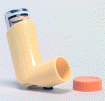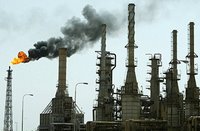

 SINGULAIR
SINGULAIR (montelukast sodium) is a prescription medicine (usually 10 mg tablets) that controls asthma in adults and children as young as 12 months. It does not replace fast-acting inhalers for sudden symptoms. You should still have rescue medication available. SINGULAIR is a different kind of asthma controller in that it is a leukotriene blocker that helps control asthma symptoms for a full 24 hours. A leukotriene is an acid metabolite that functions as a chemical mediator of inflammation that is synthesized by cells in response to inflammation or tissue injury.
Uniphyl (Theophylline anhydrous) is a controlled-release tablet (usually 400 mg - 600 mg) that reduces asthma symptoms and improves breathing by opening airways in the lungs.for 24-hour dosing interval. Theophylline is a bronchodilator. Theophylline has two distinct actions in the airways of patients with reversible obstruction; 1) smooth muscle relaxation (i.e., bronchodilation) and 2) increases contractions of the diaphragm to draw more air into the lungs.
Albuterol Sulfate Inhalation Solution 0.083% is a liquid bronchodilator solution used in the nebulizer. It usually comes in plastic vials. To administer 2.5 mg of albuterol, administer the entire contents of one sterile unit dose vial (3mL of 0.083 inhalation solution) by nebulization.
Flovent (fluticasone propionate) is a corticosteroid (not anabolic steroids abused by some athletes) used to prevent asthma attacks. Flovent will not stop an asthma attack that has already started. It comes as an aerosol inhaler and suppresses substances in the lungs that trigger inflammation.
Albuterol Inhalation Aerosol Inhaler (Proventil, Ventolin and Warrick generic brand -- pocket inhaler) is used to prevent and treat wheezing, shortness of breath and troubled breathing that causes by asthma. It is delivered via oral inhalation in a pressurized aerosol metered-dose. It contains a microcrystaline suspension of albuterol in propellants (trichloromonofluoromethane and dichlorodifluoromethane) with oleic acid.












